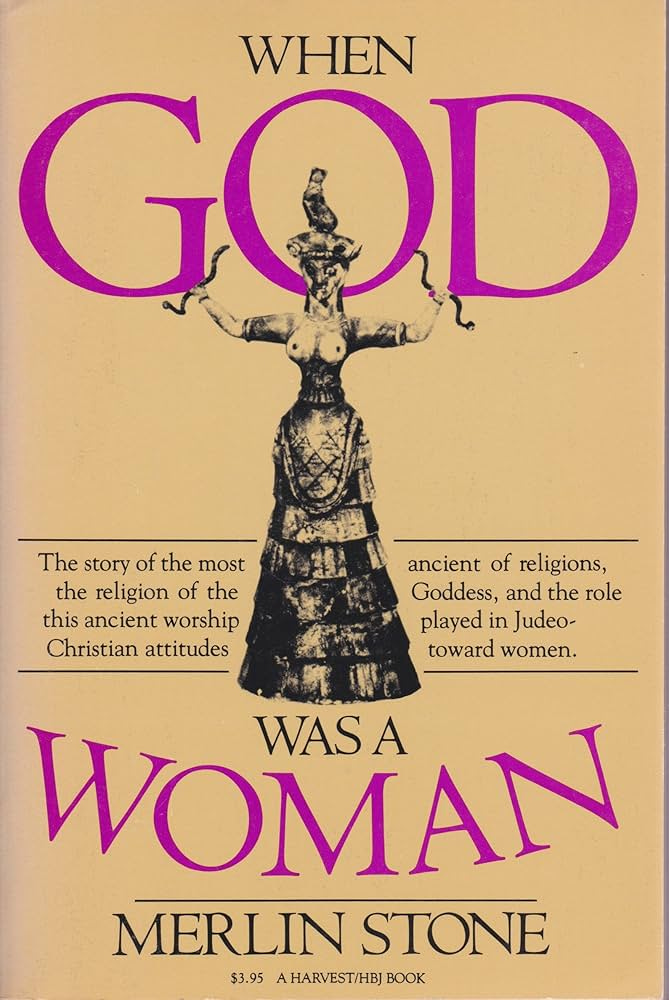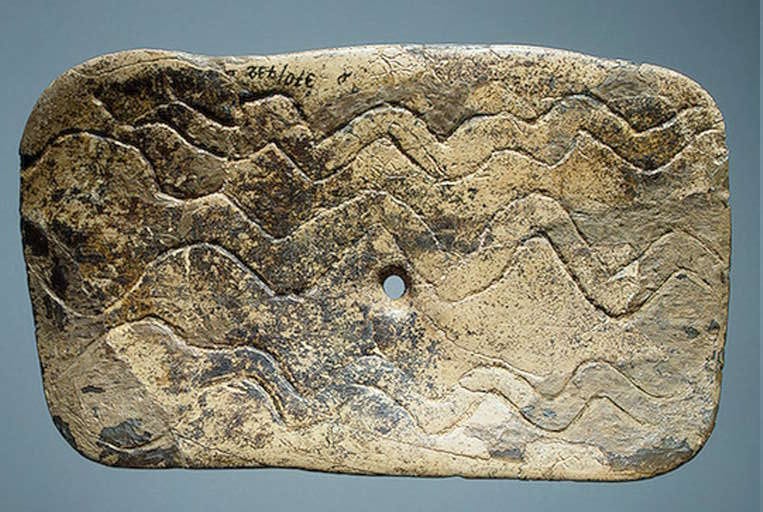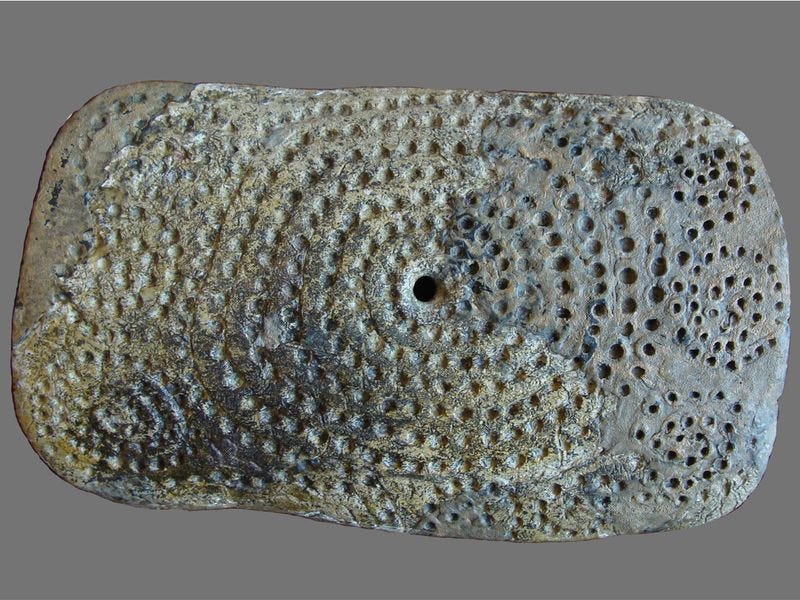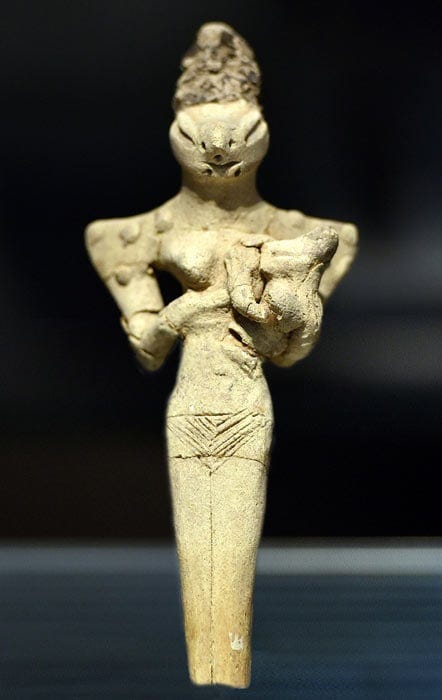When God Was a Woman
The psychedelic snake cult was inferred to be part of the primordial matriarchy back in 1976
When God Was a Woman presents an ancient world radically different from our own: one where women were the first prophets, serpents granted wisdom rather than sin, and the foundations of civilization—writing, law, medicine—emerged from temples of the Great Mother. Stone marshals evidence that this wasn't some isolated cult but rather the dominant religious system for tens of thousands of years, from the Ice Age up until roughly the invention of writing. Drawing on archaeology and mythology, she traces this tradition from the Ice Age Venus figurines through the great civilizations of Sumer, Egypt, and the Indus Valley, until its violent suppression by patriarchal invaders in the Bronze Age. In this upheaval, Eve—once revered as the Mother of All Living—was recast as a foolish woman who brought death into the world by heeding a snake. Most remarkably for our purposes, Stone proposes that snake venom played a central role in these ancient mysteries, serving as an entheogen that granted prophetic powers. Quoting that passage at length:
“MY MIND HAD EXTRAORDINARY POWERS”
This continual appearance of the serpent with the Goddess, in association with prophecy and divine revelation, raises the question of the purpose and meaning of its repeated presence. The manner in which the serpent was used in oracular divination has never been made clear, but there are some clues hinting at the possible explanation.
One of these is from the story of Cassandra, a tale that may have survived from the period of the Achaeans and the Trojan War. The legend related that Cassandra was left overnight at the shrine of Delphi as a very young child. When her mother, the Trojan Queen Hecuba, arrived there in the morning, she is said to have found the child surrounded by the sacred snakes that were kept in the shrine. They were licking Cassandra’s ears. This experience was offered as the explanation of how Cassandra gained the gift of prophecy.
A Greek prophet named Melampus was also recorded to have had his ears licked clean by serpents, thus allowing him to understand the language of birds. In the writings of Philostratus, he claimed that it was quite common for Arabians to understand divine revelations, especially the sounds of birds, explaining that they had acquired this ability by feeding themselves the heart or liver of serpents. The sounds of birds were very often associated with the oracular shrines of Greece, while on Crete and in Ascalon, Canaan, statues often included one or more doves perching on the head of the Goddess or priestess.
In both Hebrew and Arabic the terms for magic are derived from the words meaning serpent. In Brittany supernatural powers were said to be acquired by drinking broth prepared from serpents. Among the Sioux Indians in North America the word wakan means both wizard and serpent. Indians in the southwest United States had an initiation ritual in which a brave who had been chosen as eligible for the honor performed a dance in which he allowed himself to be bitten several times by a snake. As a result of this experience, provided he did not die, he was said to gain great wisdom and insight into the workings of the universe and the meaning of all things.
In addition to these connections between serpents and oracular revelation, contemporary science has perhaps provided the deepest insight into the possible relationship between the two elements. Normally, when a person receives a venomous snake bite, and subsequently the venom is introduced into the system, there are various reactions, depending upon the species of snake, including swelling, internal bleeding, difficulty in breathing and paralysis. These effects often prove fatal. But there are recent records of people who have been immunized, thus preventing the venom of a snake bite from causing death. When bitten after the immunization, especially by krait, cobra or other elapids, the subject experiences an emotional and mental state that has been compared to the effects of hallucinogenic drugs.
In an account kept by his wife, William Haast of the Florida Serpentarium (where venom is extracted for various medicinal uses) described his reaction to a krait bite, received after he had been repeatedly immunized for his work. The account was later recalled in H. Kursh’s Cobras in the Garden. Kursh writes:
Suddenly he began to feel pleasantly light and weirdly buoyant, almost gay, as though he were slightly intoxicated … he had developed an acute sense of hearing, almost painfully acute. The air about him was a charivari, a veritable jungle of discordant noises. It was as if he was under the influence of a strange narcotic … He had one inexplicable sensation. It was a peculiar emotional reaction which he could not control. As he lay with his eyes involuntarily closed, he could “see” things. There were visions in front of him.
In another report on this same incident, Marshall Smith of Life magazine quoted Haast as saying, “I found myself making up the most wonderful verses. My mind had extraordinary powers.” It may or may not be related, but the oracles of the shrines in Greece were said to be given in verse.
Much like mescaline (a product of the peyote cactus) or psilocybin (found in certain types of mushrooms), both used as sacraments in some North American Indian religions, the chemical makeup of certain types of snake venom, may have caused a person, especially someone in the expectant frame of mind, to feel in touch with the very forces of existence and a sensation of perceiving the events and meaning of the past, present and future with great clarity and comprehension. This type of sensation is certainly often reported by people using mescaline, psilocybin and lysergic acid diethylamide (LSD). The sacred serpents, apparently kept and fed at the oracular shrines of the Goddess, were perhaps not merely the symbols but actually the instruments through which the experiences of divine revelation were reached. This may explain the title of the Egyptian Cobra Goddess, who was at times known as the Lady of Spells.
According to an old Talmudic tradition, the venom of the serpent, which had corrupted Eve and all humanity, lost its strength through the revelation of Mount Sinai but regained it when Israel began to worship the golden calf.
As far as I can tell, this is the earliest academic claim of snake venom as an entheogen. Notice that Stone draws on evidence from the New and Old World. She conjectures that the Goddess cult goes all the way back to Ice Age Venus figurines and spread to the Americas through Siberia. She notes that 23,000 years ago the Siberians who went on to settle the Americas produced dozens of Venus figurines:
Notably, the Mal’ta Buret site—where these figurines were found—also contains mammoth ivory engravings resembling cobras, despite Siberia being far beyond their natural range.
Why depict snakes where there were none? These may represent foreign gods, shamanic visions, or spirits. The reverse side of this spinnable plate features a spiral—exactly the kind of pattern some neurophysiologists associate with altered states of consciousness.
Reading Stone felt akin to discovering Jaynes after independently arriving at my own version of Bicameral Breakdown. There have been so many wild ideas in the past; even when you are in strange territory, it has been trodden before. However, I don’t think anyone has put it all together in a way that is so amenable to falsification. My training is as an engineer, after all.
If you’re curious about the current state of Feminist Archaeology, I discuss some of its weaknesses in the bullroarer piece. In short, many modern feminists find it problematic that matriarchy, if it ever existed, appears only in prehistory—where the evidence is ambiguous—before vanishing without a trace in the last few thousand years. A model that relies on a universal, almost magical disappearance risks undermining its own credibility. EToC solves this by introducing evolution.




![Mal'ta burials, artifacts and statuettes.[9] Mal'ta burials, artifacts and statuettes.[9]](https://substackcdn.com/image/fetch/$s_!dW_f!,w_1456,c_limit,f_auto,q_auto:good,fl_progressive:steep/https%3A%2F%2Fsubstack-post-media.s3.amazonaws.com%2Fpublic%2Fimages%2F13111a36-5125-45e8-ab8a-3a1d90df2655_1920x1210.png)



I don't know whether your theory is right, but I enjoy reading about it.
When I post my article about mythical women, I will let you know. I think you may find it interesting.